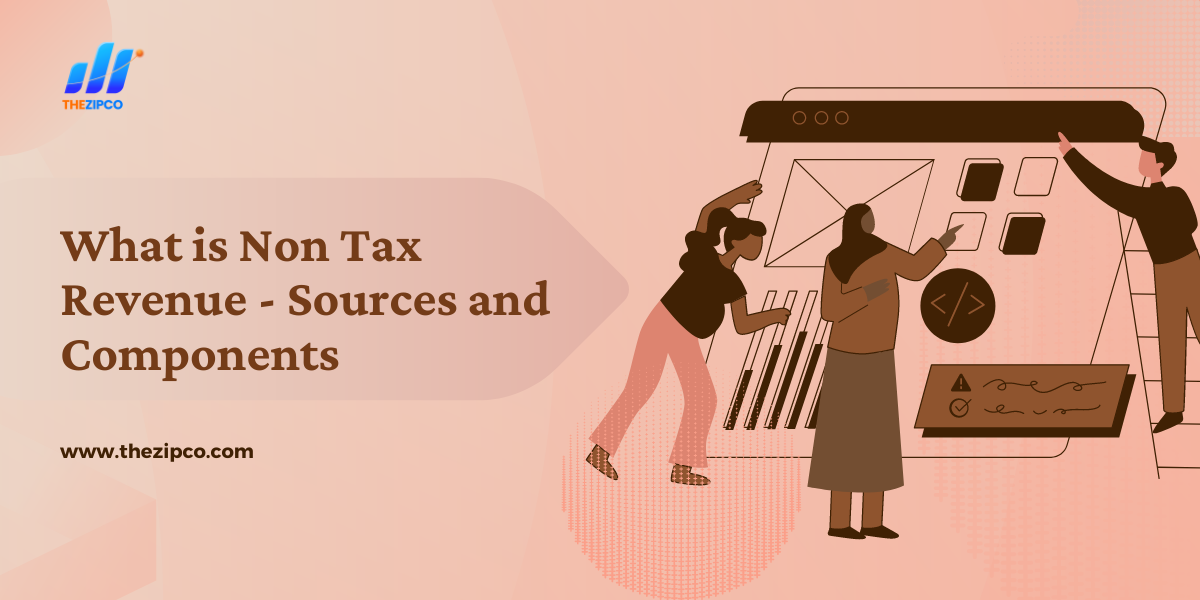Revenue receipts that neither create liabilities nor result in claims against the government are non-redeemable and can be classified into two categories: Tax Revenue and Non Tax Revenue.
Although taxes constitute a substantial part of government revenue, the government also generates income from other sources known as non-tax revenues. These receipts are not derived from taxing the public.
What is Non Tax Revenue
Non-tax revenue refers to the income the government earns from sources other than taxes. This includes earnings from dividends on investments in public sector undertakings (PSUs), interest on loans, and fees for various services provided.
Non-tax revenues provide a consistent and dependable income stream, helping to cover the costs of government services and contributing to the government’s overall revenue.
For instance, payments for services such as telecommunications, electricity, and broadband provided by the government are considered non-tax revenue, as the government maintains the infrastructure for these services.
Examples of Non Tax Revenue
Examples of non-tax revenue include income from dividends, interest, profits, fines, fees, and various receipts from government activities. These sources can include regulatory charges, license fees, and user fees for publicly provided goods and services.
Different Sources of Non Tax Revenue
Now that you understand the definition of non-tax revenue, let’s examine some of its sources:
- Employment through state public service boards
- Security services for residential properties
- Civil service fees
- Fees for municipal services
- Payments for electricity
- Charges for administrative services
- Revenue from government-run newspapers
- Sale of stationery and related items
Components of Non Tax Revenue
The various components of non-tax revenue include:
Interest
This includes interest payments on loans provided to states, Union Territories, and various entities for purposes like flood control and the modernization of police forces.
It also encompasses interest earned on loans extended to Port Trusts, public sector enterprises (PSEs), and other statutory bodies.
Examination Fees
These are fees remitted by candidates for competitive examinations administered by the Union Public Service Commission (UPSC) and Staff Selection Commission (SSC) to fill vacancies in government offices.
Petroleum License
This fee is paid to acquire exclusive rights for oil and gas exploration in designated areas. It may encompass royalties, a portion of profits derived from the contract areas, Petroleum Exploration License (PEL) fees, or Production Level Payments (PLP).
Power Supply Fees
The power supply fee denotes the income gathered by the Central Electricity Authority (CEA) for providing electricity under the Electricity (Supply) Act.
Communication Services Fees
It primarily consists of license fees remitted by telecom operators to the Department of Telecommunications (DoT) for spectrum usage.
Dividends and Profits
It primarily consists of license fees remitted by telecom operators to the Department of Telecommunications (DoT) for spectrum usage.
Police Services Fees
This encompasses the fees received for deploying central police forces to state governments and other entities. An example is providing Central Industrial Security Force (CISF) personnel to safeguard industries.
Broadcasting Fees
Broadcasting fees encompass the license fees remitted by Direct-To-Home (DTH) operators, commercial FM radio services, commercial TV services, and similar entities.
Road and Bridge Usage Fees
This pertains to the revenue gathered by toll plazas for the utilization of bridges, national highways, and other infrastructure.
Sale of Stationery and Gazettes
This comprises revenue from the sale of stationery, government publications, gazettes, etc., categorized under ‘Stationery and Printing’.
Difference Between Tax Revenue and Non Tax Revenue
Tax revenue originates from the income generated by individuals or entities and the value of goods and services exchanged. A portion of your income and the value of goods or services is required to be paid as tax.
Non-tax revenue is levied for services rendered by the government. Payment of non-tax revenue occurs only when you utilize these government services.
In summary,
Having a thorough grasp of non-tax revenue highlights that the government generates income from numerous avenues beyond taxation.
You’re now familiar with the origins and diverse sources of non-tax revenues. This consistent income flow is vital for upkeeping and enhancing the country’s infrastructure and providing essential services to all citizens.
Keep reading and supporting Thezipco!


